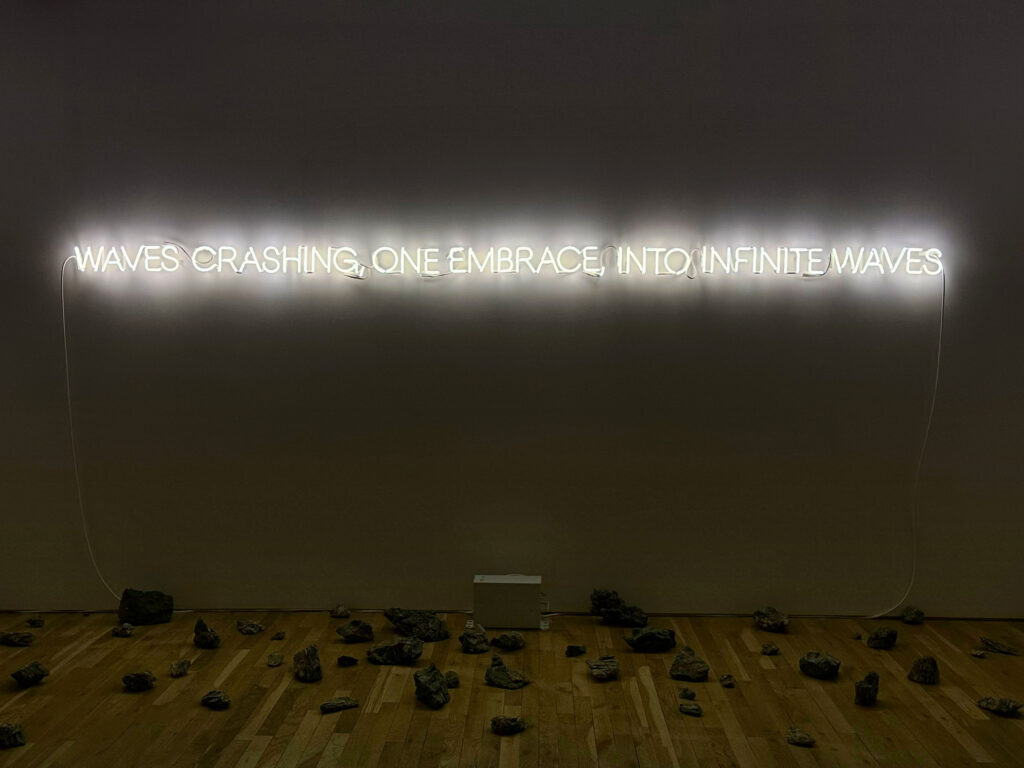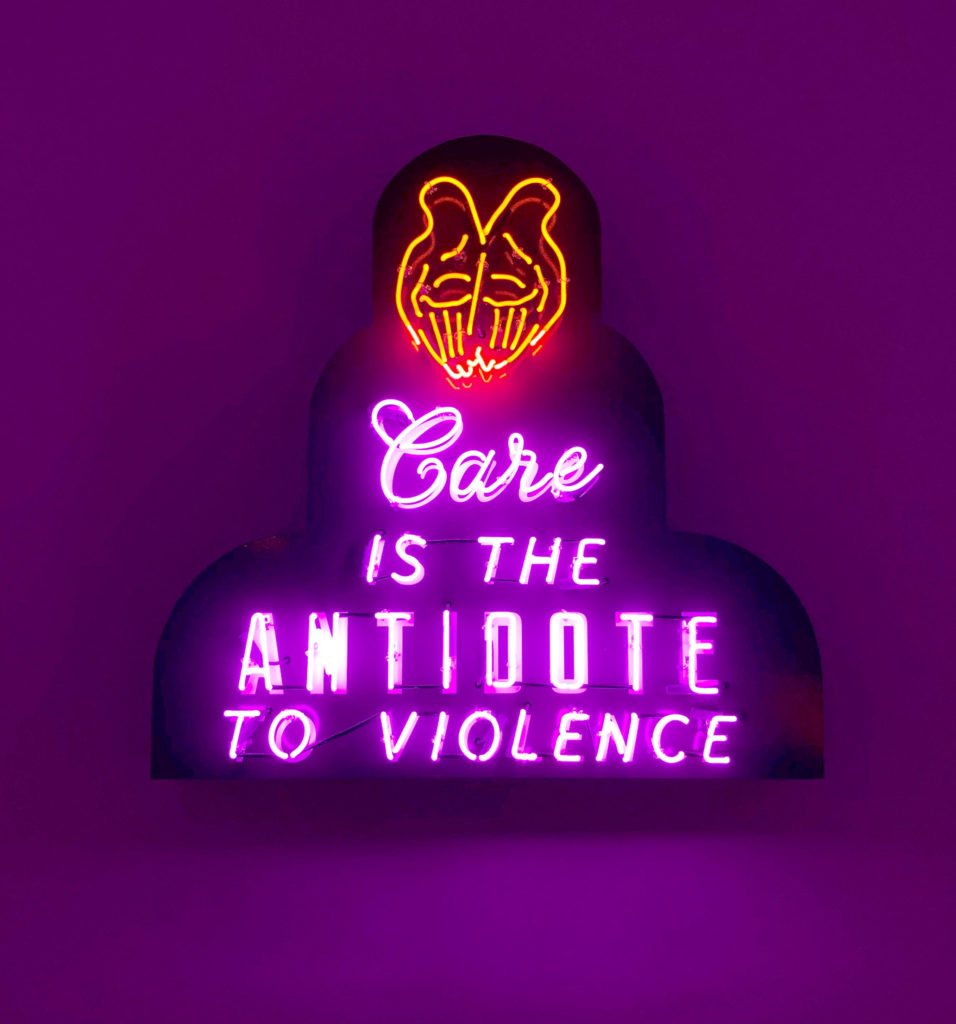






Currently at Marc Straus is Marie Watt’s impressive exhibition, Singing Everything.
From the press release-
A member of the Seneca Nation, Watt also has German-Scott ancestry. Her layered and complex influences include Indigenous knowledge and Iroquois proto-feminism, the matriarchal structures of certain Native American nations, the rise of social activism throughout the 20th century, and the anti-war and anti-hate content of the 1960s and 1970s music scene.
Central to the exhibition are three Sewing Circle pieces that were initiated at communal gatherings at the Whitney Museum of American Art in 2022. Watt’s sewing circles are cross generational, multicultural gatherings that she has been organizing for over a decade. Inspired by poet laurate Joy Harjo’s (Mvskoke/Creek) poem Singing Everything, Watt collects words from the participants of her sewing circles with the prompt, “what do you want to sing a song for in this moment?” The submitted words are then embroidered or sewn onto patches of fabric during the sewing circle. For the Whitney Sewing Circle, with over 300 participants, Watt, for the first time, used all the submitted words. Each panel is patterned in a way that stays true to the original hand. She thinks of ones handwriting as an extension of the cadence of one’s voice and in this project, it becomes part of a larger chorus. By composing large-scale wall works from these pieces of fabric, Watt creates collaborative artworks that interweave many individual handwritings, touches, and the stories that were exchanged in a shared space.
When entering the gallery, the visitor is greeted by a sweeping, 24-foot-long neon sign spelling out the words “deer, skywalker, heron, bass, great lake, woodland, beaver, turtle, wolf, lowly, muskrat, rat” in various hues that evoke the sky on the horizon during sunset and sunrise. While the piece represents a new direction in Watt’s work, she views neon as an extension of beadwork. The glass itself is at once thread and bead, and both neon and beads have a relationship to trade. They both envelop light, color, and sound, embodying sunrises and sunsets on the horizon.
Two blanket towers, her signature sculptural works, appear in the show but now with tin bells or jingles added to the reclaimed wool blankets. This choice of added material felt like a natural extension to Watt. She writes: “Blankets are danced and so are jingles, there is something healing about them both. They are objects of comfort” – by way of touch or sound. “Jingles acknowledge the Jingle Dress Dance which began as a healing ritual in the Ojibwe tribe in the 1910s during the influenza pandemic. The Jingle Dress Dance was also a radical act. In 1883, the United States banned Indigenous ceremonial gatherings. Though the ban was repealed in 1978 with the American Indian Religious Freedom Act, during its century-long prohibition the Jingle Dress Dance was shared with other tribal communities. Today it is a pow-wow dance and continues to be associated with healing. The relevance of this dance extends beyond pandemics.” By including jingles Watt brings the potential of sound into her work, adding to their visual and tactile aspects.
While drawing from long craft traditions such as textile or glass work, Watt is expanding her work by including contemporary stories and both individual and collective experiences. Her primary interest is to think about art as more experiential, rather than only visual, a direction she plans to explore further.
This exhibition closes 5/20/23.
















